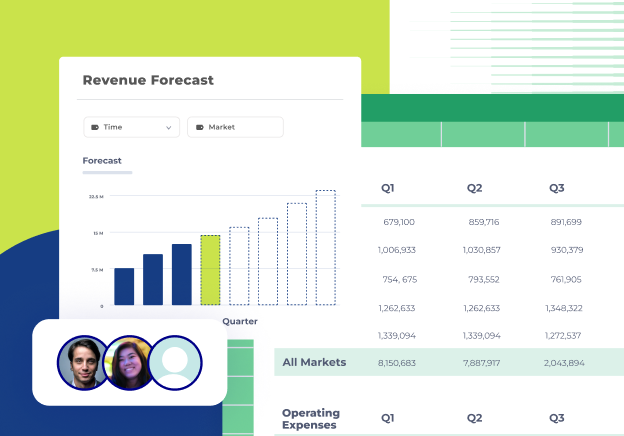The fundamentals of marginal revenue: a quick recap
Marginal revenue is the additional income generated from selling one more unit of a product or service. It's key in strategic finance for making informed decisions about pricing and production.
Marginal revenue is calculated by dividing the change in total revenue by the change in quantity sold, helping businesses understand the financial benefit of selling additional units.
The marginal revenue formula is:
Marginal Revenue (MR) = Δ Total Revenue (TR) / Δ Quantity (Q)
The importance of marginal revenue varies across different market structures:
- Perfect competition: In a perfect competition market, where companies have no control over market price, the marginal revenue equals the selling price. This shows that each extra unit sold brings in revenue equal to the market price. Marginal revenue is most often equal to average revenue. In these cases, companies focus on matching their output to the market price to maximize profits.
- Monopoly: In a monopoly, where one company dominates the market, the marginal revenue is usually less than the price. This is because as a monopolist sells more, it often has to lower prices to attract more buyers, which affects the revenue from additional sales. Therefore, a monopolist must balance the price and quantity to maximize revenue.
- Oligopoly and monopolistic competition: In more complex markets like oligopolies, where a few firms dominate, or in monopolistic competition, where many firms sell similar but not identical products, marginal revenue helps in understanding how changing output affects market prices and overall revenue. It becomes a tool for assessing competitive strategies and market behavior.
In short, marginal revenue is crucial for companies to decide how much to produce and at what price, influencing their overall profit strategy.
In addition to understanding marginal revenue, it's important to distinguish it from marginal cost. Marginal cost is the expense incurred to produce one additional unit of a product. While marginal revenue focuses on the income aspect of selling an additional unit, marginal cost deals with the cost aspect.
This distinction is crucial because profitable decision-making involves comparing these two metrics. Ideally, a company should continue increasing production as long as the marginal revenue of an item exceeds its marginal cost. Understanding how marginal revenue and marginal cost relate to each other allows you to determine the optimal production level where you can achieve maximum profitability.

Beyond the basics: marginal revenue in strategic finance
Marginal revenue is important in determining how changes in sales volume can impact your company’s profitability. This insight can help you make informed decisions on pricing, product development, and market expansion strategies.
For example, tech companies often use marginal revenue analysis to decide on pricing strategies for new software releases. By understanding the additional revenue generated from each additional subscription, they can optimize pricing to maximize overall revenue, considering both new customers and potential upgrades from existing users.
The power of marginal revenue extends to shaping long-term financial projections. FP&A leaders can accurately forecast future revenue streams based on expected sales volumes and pricing strategies. This forecasting is especially critical in industries with high fixed costs but low variable costs, such as manufacturing or digital services, where understanding the revenue from each additional unit sold can significantly impact long-term financial planning.
By adding marginal revenue analysis to your strategic finance toolkit, you, as an FP&A leader, can make more nuanced and effective decisions. This allows for a deeper understanding of the financial implications of strategic choices, ultimately guiding your company towards profitable growth and long-term financial stability.
Key concepts: what FP&A leaders need to know
In this section, we'll explore key aspects of marginal revenue that are particularly relevant for FP&A leaders. The focus is on how these advanced concepts can be effectively integrated into budgeting, forecasting, and technology. This integration is essential for FP&A leaders aiming to align financial strategies with their company's overall goals.
Let's explore these key areas:
Advanced marginal revenue concepts
Understanding the finer points of marginal revenue is vital for strategic decision-making. Here are three advanced concepts to consider:
- Elasticity of demand: Elasticity of demand reveals how sensitive sales volumes are to price changes. As an FP&A leader, applying this knowledge helps you set prices that maximize profitability without losing customers.
- Segmentation and differentiation: This involves analyzing how marginal revenue varies across different customer segments or product lines. This kind of analysis can lead to more effective, targeted pricing strategies, increasing overall profitability.
- Market penetration vs. skimming strategies: Insights into marginal revenue are critical in choosing market entry strategies. Whether adopting a low-price market penetration strategy or a high-price skimming approach, understanding marginal revenue's impact guides these crucial pricing decisions.
The role of marginal revenue in budgeting and forecasting
Marginal revenue plays a significant role in the budgeting and forecasting processes:
- Scenario analysis: Integrating marginal revenue into scenario planning allows for more accurate forecasting. For example, how would a price reduction impact revenue if the market becomes more competitive? This analysis helps in preparing budgets that are resilient to market changes.
- Performance metrics: By including marginal revenue in key performance indicators (KPIs), FP&A leaders can align financial planning more closely with business strategies, ensuring every decision contributes to the company's long-term objectives.
- Profit optimization: Understanding marginal revenue helps in identifying the most profitable mix of products or services, essential for resource allocation and long-term financial planning.
Leveraging tools and technologies for marginal revenue analysis
FP&A software empowers you to dive deep into marginal revenue data, uncovering trends and patterns that might not be evident otherwise. This deep dive can lead to more informed strategic decisions.
For example, an FP&A leader using FP&A software might discover that a small price increase on a product line resulted in slightly fewer sales, but significantly higher overall revenue. This finding can directly inform the pricing strategy for a new product, suggesting a similar increase could boost profitability without greatly impacting sales. This kind of targeted insight, gained from analyzing marginal revenue data, leads to more effective and informed pricing decisions.
For an FP&A leader focused on marginal revenue analysis, selecting the right FP&A software involves considering several key criteria:
- Data integration capabilities: The software should easily integrate with existing data sources and systems for seamless data collection and analysis.
- Advanced analytics and reporting: Look for robust analytics features that can dissect complex data sets, providing deep insights into marginal revenue trends.
- Real-time data processing: The ability to process and display data in real time is crucial for timely decision-making in response to market changes.
- User-friendly interface and visualization tools: A user-friendly interface with effective visualization tools, like dashboards, makes it easier to interpret and act on data insights.
- Scalability and flexibility: The software should be scalable to grow with your business and flexible enough to adapt to changing business needs.
- Security and compliance features: Ensuring data security and compliance with relevant financial regulations is essential for any FP&A software.
These criteria help ensure that the chosen FP&A software not only meets the current needs of marginal revenue analysis but also supports the broader strategic financial objectives of the company.
➡️ Check out our Ultimate Guide to FP&A Software for an in-depth look at the top 13 software options on the market. ⬅️
Practical steps for FP&A leaders to effectively implement marginal revenue analysis
Now that you have a better understanding of the role marginal revenue plays in strategic finance, the question is: What concrete actions can you take to integrate marginal revenue analysis into your financial planning and operations?
Implementing a marginal revenue-focused approach requires careful planning, effective data management, and team education. Here are the steps to guide you through this process:
1. Incorporate marginal revenue into financial models
Start by integrating marginal revenue calculations into your existing financial models. This means regularly updating these models to reflect current marginal revenue figures and using them to inform decision-making processes.
2. Align strategic objectives with marginal revenue insights
Ensure that your company’s strategic objectives, such as market expansion or product diversification, are aligned with insights gleaned from marginal revenue analysis. This alignment helps in making decisions that are not only financially sound but also strategically coherent.
3. Regularly review and update data
Establish a routine for regularly reviewing and updating marginal revenue data. This practice ensures that your analysis is based on the most current information.
4. Utilize advanced analytical tools
Employ advanced analytical tools (such as FP&A software, like Cube) for more accurate and efficient marginal revenue analysis. These tools can help in identifying trends, patterns, and anomalies in the data.
5. Promote cross-functional collaboration
Collaborate with sales, marketing, and product development teams to gather comprehensive data. This collaboration provides a more holistic view of how different factors affect marginal revenue.
6. Encourage a culture of continuous learning
Foster a culture where team members are encouraged to stay updated on the latest trends and techniques in financial analysis, including marginal revenue analysis. This might involve subscribing to relevant financial publications, attending workshops, or participating in online courses.
By following these practical steps, you're not only enhancing the financial planning process but also contributing to the overall strategic success of your organization.
Conclusion: one step closer to strategic finance
The strategic application of marginal revenue analysis is a game-changer for FP&A leaders seeking to steer their companies towards sustainable growth and profitability. Through a deeper understanding and implementation of this concept, you can make more informed decisions about pricing, production, and overall financial strategy.
Want to learn how Cube can help you better analyze marginal revenue and set your business up for success? Request a free demo today.



.png)









.png)
.png)
.png)


.png)
.png)
